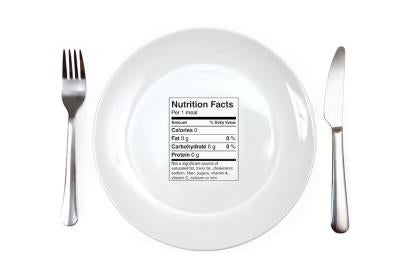-
FDA has long recognized the use in food labeling of Dietary Guidance Statements (e.g., fruits and vegetables are part of a nutritious dietary pattern) as a tool that could help consumers improve their health and decrease the risk of diet-related diseases by making sound dietary decisions. On November 25, 2003, FDA issued an advance notice of proposed rulemaking (ANPRM) that solicited information and comments on alternatives for regulating qualified health claims and on the appropriateness and nature of dietary guidance statements. More recently, as covered extensively on our blog, FDA announced a new Nutrition Innovation Strategy (NIS) in March 2018 and held a public meeting on July 26, 2018 to receive input on topics including (1) what types of claims or other nutrition-related labeling statements are most helpful in facilitating product innovation to promote healthful eating patterns and (2) what types of claims and other labeling statements are most helpful to consumers in selecting foods consistent with recommendations in the “Dietary Guidelines for Americans.”
-
On March 27, 2023, FDA published notice on the availability of a draft guidance for industry titled, Questions and Answers About Dietary Guidance Statements in Food Labeling. The draft guidance defines Dietary Guidance Statement as “written or graphic material, based on key or principal recommendations from a consensus report, in food labeling that represent or suggest that a food or a food group may contribute to or help maintain a nutritious dietary pattern.” Dietary Guidance Statements focus on a food or food group in contributing to or maintaining nutritious dietary patterns (e.g., “Eat broccoli as part of a nutritious dietary pattern”) and do not undergo review by FDA prior to use in the marketplace. They are distinguishable from Health Claims, which focus on the relationship between a particular food substance and reduced risk of a disease or health-related condition (e.g., “Diets low in sodium may reduce the risk of high blood pressure, a disease associated with many factors”) and which generally undergo review by FDA through a petition process, and Nutrient Content Claims which expressly or implicitly characterize the level of a nutrient in a food (e.g., a claim that a food is “low” in fat content or is “healthy”).
-
The guidance includes recommendations on how to use Dietary Guidance Statements as follows:
-
Identifying an appropriate source of the Dietary Guidance Statement;
-
Ensuring that a product bearing a Dietary Guidance Statement contains a “meaningful amount” of the food or food group or “food group equivalent” that is the subject of the statement;
-
Maximum levels that should be present per Reference Amount Customarily Consumed (RACC) for individual foods bearing a Dietary Guidance Statement, i.e., 15% of the daily value (DV) for sodium (345 milligrams), 10% of the DV for saturated fat (2 grams), and 10% of the DV for added sugars (5 grams), with an exception for saturated fat in seeds and nuts.
-
Maximum levels that should be present for main dishes bearing a Dietary Guidance Statement, i.e., 30% the saturated fat and sodium DVs per RACC and 20% of the DV per RACC for added sugars.
-
Maximum levels that should be present in meals bearing a Dietary Guidance Statement, i.e., 40% of the saturated fat and sodium DVs per RACC and 30% of the DV per RACC for added sugars.
-
-
FDA specifically invites comments on:
-
Use of Dietary Guidance Statements on refined grains that are staples of cultural cuisines that are not high in added sugars, saturated fat, and sodium (since consumption of whole grains is encouraged in the guidance);
-
Alternative options for calculating “meaningful amounts” or “food group equivalents” of a food or food group that is the subject of the Dietary Guidance Statement;
-
Disclosure statement requirements for situations when a food is recommended by a consensus report as part of a nutritious dietary pattern and the food has a nutrient profile that exceeds the recommended nutrient levels set forth in the guidance;
-
Use of Dietary Guidance Statements on bottles or containers of plain water and other calorie-free beverages ( e.g., flavored carbonated water, coffee, and tea).
-
-
Comments on the draft guidance that are submitted by June 26, 2023 will be considered before FDA begins work on the final version of the guidance. FDA will also consider comments received from the 2003 ANPRM that are deemed relevant to the current dietary recommendations.
FDA Issues Draft Guidance on Dietary Guidance Statements on Food Labels
Monday, March 27, 2023



 i
i

